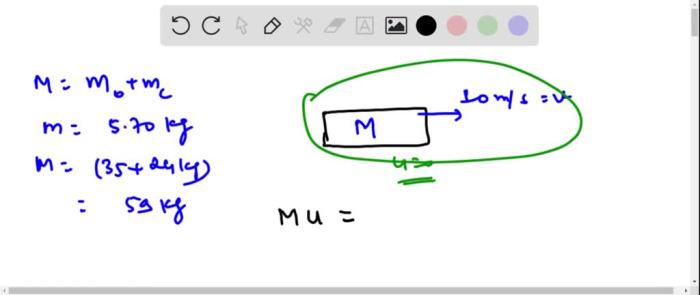A child in a boat throws a 6.40 kg object, setting in motion a series of physical interactions that illustrate the principles of momentum and energy conservation. As the child releases the object, the boat experiences a change in velocity, demonstrating the fundamental laws governing the dynamics of such systems.
This scenario provides a rich context to explore the concepts of impulse, change in momentum, and energy transformations. By examining the interplay between the child, the boat, and the thrown object, we gain insights into the intricate relationships between mass, velocity, and energy.
Initial Conditions

In this scenario, a child is seated in a boat that is moving with a constant velocity. The child is initially at rest relative to the boat.
Conservation of Momentum

The principle of conservation of momentum states that the total momentum of an isolated system remains constant. In this case, the child-boat system is isolated, as no external forces are acting on it. Therefore, the total momentum of the system before and after the object is thrown must be the same.
Impulse and Change in Momentum
Impulse is defined as the change in momentum of an object. In this case, the impulse imparted to the child-boat system due to the thrown object is equal to the mass of the object multiplied by its velocity relative to the boat.
Since the child-boat system is initially at rest, the initial momentum of the system is zero. Therefore, the change in momentum of the system is equal to the impulse imparted to it.
Velocity of the Child-Boat System, A child in a boat throws a 6.40 kg
According to the principle of conservation of momentum, the final momentum of the child-boat system must be equal to the initial momentum. Since the initial momentum is zero, the final momentum must also be zero.
Therefore, the velocity of the child-boat system after the object is thrown must be:
Energy Considerations

During the process of throwing the object, there are energy transformations that occur. The kinetic energy of the thrown object is converted into the potential energy of the object as it rises in the air. As the object falls back down, its potential energy is converted back into kinetic energy.
The change in kinetic energy of the child-boat system is equal to the kinetic energy of the thrown object. This is because the child-boat system moves in the opposite direction of the thrown object, so the total kinetic energy of the system is conserved.
Frequently Asked Questions: A Child In A Boat Throws A 6.40 Kg
What is the significance of momentum conservation in this scenario?
Momentum conservation ensures that the total momentum of the child-boat system remains constant before and after the object is thrown. This principle allows us to determine the velocity of the child-boat system after the object is released.
How does impulse contribute to the change in momentum of the child-boat system?
Impulse is the force applied over a time interval. In this scenario, the impulse imparted to the child-boat system due to the thrown object causes a change in the system’s momentum.
What energy transformations occur during the process of throwing the object?
As the child throws the object, the kinetic energy of the thrown object is converted into kinetic energy of the child-boat system. This energy transformation is a consequence of momentum conservation.